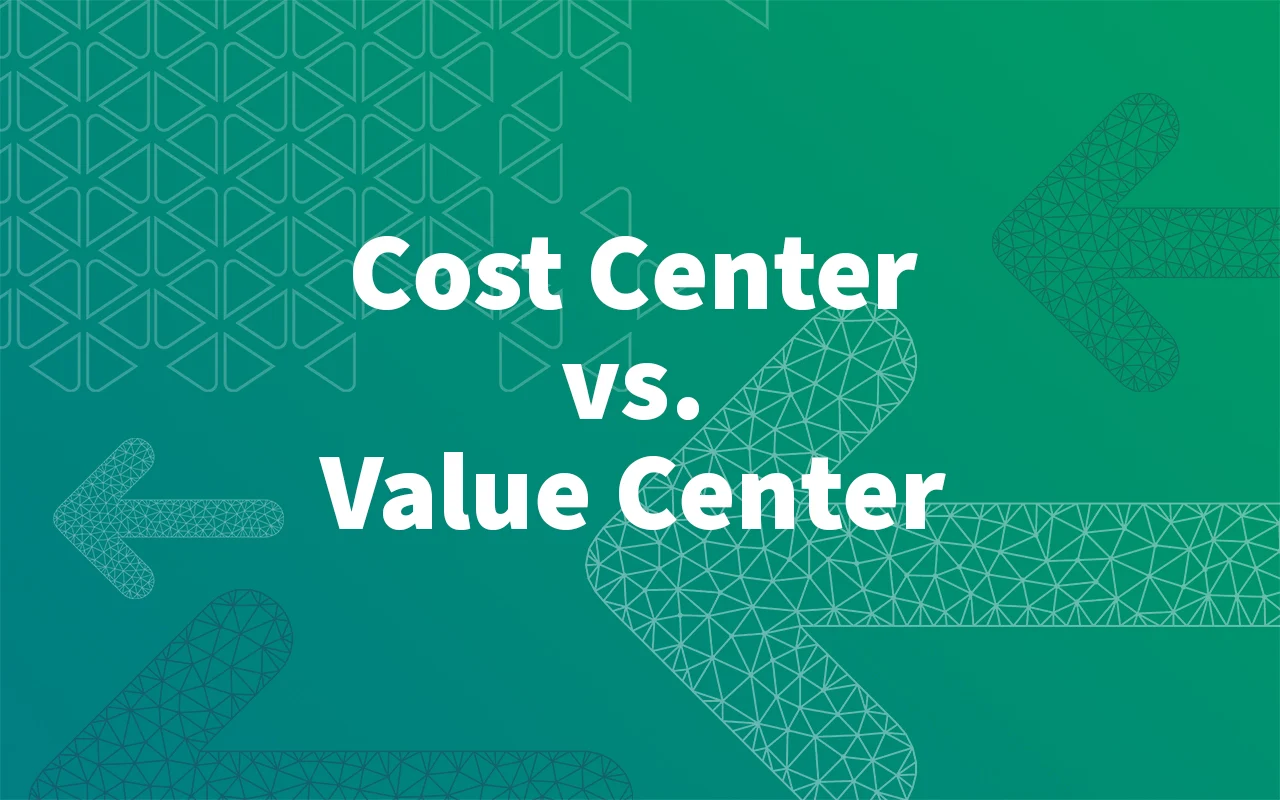As businesses look to the future, the notions of cost and value are changing. From a traditional business perspective, some departments are considered cost centers while others are value centers. But with changing workplace and workforce dynamics, this concept is being challenged, and more teams are pivoting to prove their value now more than ever before. The IT service desk is not exempt, and there are new opportunities for the service desk to reposition themselves as strategic deliverers of value and to fit within the business in an expanded way.
What is the Difference Between a Cost and Value Center?
Before we can dive in, it’s important to understand what we mean when we talk about cost vs. value centers.
A cost center is a department or team that is necessary for operations but generates no revenue. Typically, these business units include Human Resources, back-office admins, and the IT department (among others). You can think of these teams as the people who are working in the background, behind-the-scenes roles of a business.
A value center is defined as a team that produces and delivers value, often in the form of goods or revenue. This could be teams in sales, customer service, those who work on the production line, or manufacturing teams.
The argument can be made that without the cost center, the value center would not exist. While this is a valid argument, it takes a shift in the way of thinking about cost vs. value to truly make an impact in the business needs. As an example, for the support center to be considered a value center, it must first understand what’s needed by the customer and what value streams they are supporting. Then, the support center must consistently deliver on that need.
How Organizations Define “Value” and The Impact on the Cost vs Value Center Debate
So how does a support center shift the conversation from being considered a cost center to becoming a value center? First, by enabling business outcomes. But just as importantly, by providing the experience needed by the customer. Both start with understanding the business goals and value streams and using those goals to inspire automation efforts.
I mentioned that there must be a shift in thinking about cost vs. value, but the way your business defines value is important to distinguish. Every team and organization will define value in a different way. For some, value is strictly revenue, while for others value is the amount of time or energy saved overall. There can be a variety of other definitions of value, and until you understand your company’s unique viewpoint it will be difficult to understand how to pivot from cost to value in your service desk using automation.
Value is only realized when desired outcomes are achieved. In this new way of working, the support organization has had to evolve to ensure that customers achieve those desired outcomes, they had to become enablers of the entire business. This means that the support organization has had to support both IT-related and non-IT-related types of issues, while simultaneously supporting digitization efforts within other lines of business. Support is no longer just about the technology, but also how that technology is applied to achieve business results.
3 Ways to Use Service Desk Automation to Shift Focus to Value Co-Creation
By now, I think I have hammered the point home: IT service delivery automation can help shift your IT service desk from being a cost center to being a value creator. But how can you use service desk automation to make that a reality? The following three methods can help:
1. Enable Business Outcomes with ITAM
One way to create value is by optimizing costs, and you can optimize those costs with IT asset management automation. An IT Asset Management system will manage the IT Asset Management lifecycle of your software, hardware, licenses, and contracts using an IT asset management software and mature configuration management database, which integrates with most discovery tools. Think of ITAM as inventory management for everything from laptops, servers, tablets, desktop computers, and mobile devices to mobile apps, operating systems, cloud-based applications, software licenses, and everything in between that make up your company’s digital environment.
Using automation, an ITAM system has many purposes beyond simply tracking assets and software compliance. It is a critical business function which ensures that tools are managed and controlled in an effective way through ITIL processes like Discovery and Dependency Mapping, Inventory Management, Software License Management, Contracts Management, and more. Further, ITAM automation takes away the time-consuming manual processes of day-to-day asset tracking and creates a streamlined way to quickly view, update, service and replace assets.
You may be asking yourself “How does tracking assets create value? Doesn’t it just help you stay on top of what you have without solving problems or incidents?”
By understanding your assets and their lifecycles, you will be able to prevent downtime and proactively save costs as software licenses and contracts are due for review. This can create major value for the entire organization. Further, this will help streamline digitization efforts for the enterprise.
2. Create a Personalized Automated Experience for Each Customer
Now more than ever, creating a personalized experience for each customer is important. This starts with automation that powers the customer-centric mindset. Automation when paired with customer personas can amplify value for the end user. This type of automation can take the form of a self-service portal or chatbot which can be integrated in a website, Teams, Skype, Zoom, or another preferred messaging platform.
Often, chatbots and AI are wrongfully thought of as impersonal. However, when the chatbot can consider information like what types of devices the user is assigned, their incident history, and what their needs will likely be, the artificial intelligence can provide a personalized and memorable experience.
This is a major value creator because when given a personalized experience, customers are more likely to utilize the self-service portal. This will lead to the empowerment of users to solve their own problems, getting them back up and running faster with less of an impact on their day, thereby allowing the customers to continue to work on their own valuable contributions. At the same time, this will free up agents to work on greater efforts within the organizations.
3. Improve Productivity through AITSM
AITSM can improve productivity by automating service desk processes. Gartner introduced the concept of AITSM to cover all the efforts needed to introduce AI and automation into an organization. Gartner’s definition of AITSM states:
“AITSM is not an acronym; rather, it is an initialism. It is a concept that refers to the application of context, advice, actions and interfaces of AI, automation and big data on ITSM tools and optimized practices to improve the overall effectiveness, efficiency and error reduction for I&O staff.”
In layman’s terms, AITSM is ITSM driven by intelligent automation to assist with tasks, requests, and actions in the IT service desk. A few examples of the critical capabilities of AITSM include:
- Leverage AI and machine learning to prescribe classification, priority, and knowledge related to an incident
- Proactive identification and remedy of user-issues
- Automated creation of knowledge responses using text analytics and smart data discovery on unstructured data
- Identify knowledge experts and articles
- Sentiment analysis
The elements of AITSM all equate to a proactive experience that creates value for the end-user and contributes to the shift to becoming a value center and helping achieve the outcomes of the overall business.
Don’t Forget to Measure Value in the Service Desk
Value can be captured and measured in several ways, such as reviews, testimonials, referrals, recommendations, and NPS scores. Remembering to measure the KPIs of the service desk and the organization as a whole will help you gauge whether the service desk is creating value.
To learn more about how to create value at the service desk, request a demo with one of our experts today.
2025 Gartner®Market Guide for ITSM Platforms
Get the latest ITSM insights! Explore AI, automation, workflows, and more—plus expert vendor analysis to meet your business goals. Download the report now!



